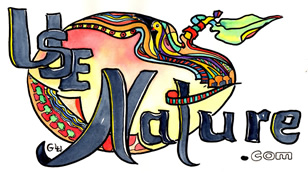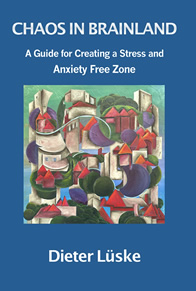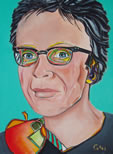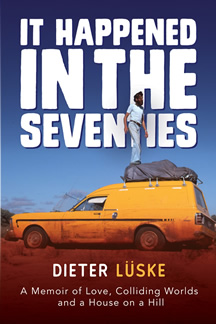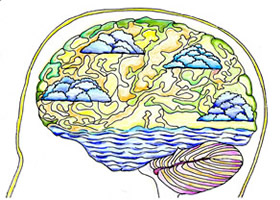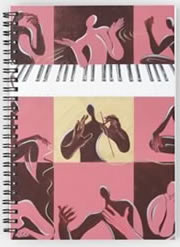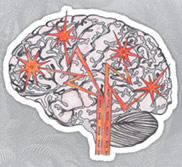useNature.com ... for Holistic Health & Lifestyle - Chaos in Brainland
Counselling - Brainland
What is Accelerated Learning?
Lifestyle Online Magazine - Global Information
Article: Accelerated Learning

Article extracted from a workshop & book called:
DO YOU BELIEVE IN YOU - by Dieter Luske© - Gold Coast
Author of It happened in the seventies
|
ARTICLE 3 - Chapter 1 - Accelerated Learning
( Memory enhancement )
I lecture in a style which is known as accelerated learning. This will obviously not help you very much while reading this book, but I am sure that you will find the subject very interesting and you will be able to use specific techniques like MIND MAPS.
Giving a workshop I ask a lot of questions - because Participation is one key to learning.
If you answer my questions, then you are supplying the data for your own growth.
If you supply the data, you will remember the data.
Don't believe that I have all the answers.
The difference between knowing and understanding is the difference between reading or hearing something and experiencing it. One way of experiencing is participation and articulation. In order for the mind to digest something, it is not enough to think about it. By articulating what you think, you put meaning to words, which helps you to understand and therefore remember.
How can you use this key for learning?
In future, if you read or study something, have a short break, then ask yourself the right questions and answer aloud! As soon as you have put your own meaning to whatever you have studied, you will remember it and be able to recall it with ease.
The next key is VISUALISATION.
I use flip charts for lecturing, and MIND MAPS for my own studies, reading, planning, goal-setting and more or less for everything I do. On these flip charts I use different colours to stimulate visualisation, which in turn stimulates the right side of the brain.
We use about 4-6% of our brain capacity, and this is mainly left side brain use. If we start to use the right side of our brain we can effectively double our brain capacity.
The trusty old left side is serving us very well, and we would not be able to speak without it, as it controls language and mathematical formulae. It is our logic side and it shows us the sequence of things. We also need it for analysis, (altogether pretty important stuff).
Do you like your left brain? Yes? Say "thank you" to you left brain and ask now for permission to use more of the right side of your brain.
The right side is our creative side. It is music and rhythm, imagination, daydreams, forms, patterns, images, pictures and colours. It is also the tune of a song, BUT NOT THE WORDS-that is the left side. This is the reason that singing helps us to bring right and left sides together.
Do you believe that the right side is as important as the left side? Yes, it certainly is. One should not be without the other.
The power comes from teamwork, working together, each helping the other. The right side will show you the big picture, the left side the details. Having one without the other may be the big difference between being successful or unsuccessful.
What can you do to stimulate the right side of the brain? Colour, showing the big picture, the overview, asking questions to stimulate your imagination and of course music. The music used is BAROQUE MUSIC, as this music is written in sixty beats per second.
WHAT DOES THAT MUSIC RESEMBLE? Yes, the heartbeat in a state of relaxation. Which brings us to relaxation.
Do you learn better when in a relaxed state of mind? Yes. You can concentrate and think much better when you are relaxed. There is a reason for it. We have four different kinds of brainwaves. We will concern ourselves mainly with two of them.
The first one is called BETA WAVE which has a frequency of 14-21 cycles per second and is the wave we use in our ordinary waking state. The BETA WAVE, will increase in times of stress. If it rises as high as 60 cycles per second you will become hysterical. If it goes much higher than that you will black out.
The second one is called ALPHA, with a frequency of 7-14 cycles per second, and that is the state of relaxed alertness. You are calm and peaceful, with clear creative thinking. Ideas, solutions and intuitive breakthroughs occur, and studies are easy. In this state you can reach your full potential. That is the state we desire. This is what we want for learning or for painting!
By the way, this is also the state for body regeneration, increased health and vitality.
Cancer patients have used this alpha state to regenerate and to refocus their attitudes and belief systems through relaxation and meditation. This is why we should put ourselves into a relaxed state before doing any mental work.
I don't want to spend twenty minutes of your time putting you into a relaxed state. What you will do instead is to give your subconscious mind a message that you are giving yourself permission to relax.
This will take only three minutes-are you ready?
Please sit comfortably, and as you sit comfortably, allow yourself to relax and take a deep breath ..... yesss--and hold it ..... and breathe out ...... yes, gooood, and again, an even deeper breath, and hold it ..... collect all your tensions and breathe out letting go of those tensions ..... and the last deep breath ..... yes and holding, holding and breathing out letting go the rest of your tension ...... that's good, fine, and as you sit in your chair you can continue to relax.....becoming more and more relaxed, giving all your muscles permission to relax ..... and telling yourself - I allow myself to relax, its OK, I am safe and secure in my present situation ...... from now up on, whenever I sit here in this room and hear this music I am relaxed. (Play some Baroque music while reading).
Thank you, slowly open your eyes and keep that relaxed feeling.
Before we go into mind maps, some more points on the accelerated lecturing style. There is a reason that a lecturer walks around or stands while you sit. The act of your looking up stimulates learning and visualisation. In fact you experience a learning increase of about 25% by just looking up. You will have a further learning increase if you use the right body language that is, sitting relaxed, arms and legs uncrossed. You simply will open yourself up for easier learning.
Next we will talk about MIND MAPS, and after that I will list a number of techniques to further increase your learning and your retention ability.
MIND MAPS-FLIP CHART
With whatever you study or read, you can start from now up on to take your notes in a mind map style. Have some paper and coloured pens ready. (I usually use the paper horizontally, but you can use it whichever way you choose). You should have at least a red, blue, green, and black pens, and a yellow highlighter for specifc areas.
Our brains do not work in a linear fashion. We can work better if we jump from one place to another, connecting messages with lines or drawings.
The more colourfully, humourously and meaningfully you can do it, the better the results.
You will remember outstanding things much more clearly than dull things.
Remember the addage; one picture is worth a thousand words.
Mind maps are not only for studying, they are a perfect tool for organising, planning or developing business strategies. You will not find a better way to prepare speeches or business meetings. For everything you have to remember you can design a mind map.
Start by writing the main heading in the middle, and continue to put sub-headings around it, in whatever fashion feels right to you.
Your first mind map can be about mind maps and accelerated learning itself, which will be like a short rehearsal of this lecture.
ACCELERATED LEARNING - SUMMARY
-
Two brains are better than one! Do everything you can to stimulate the right side of your brain. Use music, colour, imagination, daydreaming, looking upwards, alpha relaxation, drawing and painting and looking at the big picture, (the overview).
-
Your brain has enormous potential. it is capable of much more than you have imagined. The only limits are the limits you have placed on yourself, your belief system and your attitudes.
-
Mental ability does not decline with age ! Blood supply may decline, therefore circulation is vital! Constant stimuli improves mental ability, USE IT, OR LOSE IT!!
Memory is not a bottle which fills up and overflows. Memory is like a tree, the more branches on the tree, the greater the possibility for new branches to grow. -
Memory is divided into short term and long term memory.
Short term is the working memory, (reading the words), and works by electrical impulses.
Long term is the meaning of a memory and it is permanent, and works by chemical impulses. -
Transform short term memory into long term by rehearsing what you have learned and put meaning to. Articulate and visualise what you have learned. Put it into association with other things you know. Every person has his or her own specific way of memorising something. How do you memorise names? Ask other people how they do it, you may be surprised to find out totally new ways of memorising something.
-
Words and facts linked to pictures in your mind are easier to learn and remember.
Memory or recall depends on associations, which means linking ideas together. For example: if you hear the word boat, you are likely to forget it again in a matter of minutes. If you associate the word boat with a picture in your mind of a boat, you will remember it longer.
You can then associate further, linking the word with a picture of a boat which looks funny or bizarre, or a boat you know, then further associate it with a person.
For example: "that boat belongs to my friend Bob." ...and tah's when you will not forget it ever again. -
Visual memory is perfect. You only have to use it.
The key to memory is therefore, to improve your visualisation and to form strong visual associations of new material. In other words, become your own internal movie director, associate pictures, storylines, plots, meanings, everything in one big picture and get the overview. -
Basically the more time you spend learning the better the learning.
USE IT OR LOSE IT
Attention span and learning breaks are of vital importance. A normal attention time is about fifty minutes, and after that the learning curve goes down. Why is that? After a certain time of learning, or input, you need time to sort, store and compute. Your brain does that automatically, but while it does it, new information may not reach your attention. That's why at lectures you can see people drifting off after about one hour. The lecturer notices that and tries to get your attention by talking faster. Does that work? No, it makes it worse. That's why we have breaks after about one hour.
An ideal learning time-pattern is:
Immediate rehearsal within the short term memory span.
A test after 10 minutes. Ask yourself questions.
A review after the first hour.
A review after an overnight rest. Sleep reinforces memory.
A short review after one week.
A short review after a month. -
Individual lessons should have breaks, because you always remember best at the beginning and at the end of a lecture. The more breaks you have, the more you will be able to remember!
-
Individual lessons should incorporate something outstanding in the middle, according to same principle as above. Interrupt learning with stretching, dancing or getting a glass of water, etc.
-
Learning by example is easier (association).
-
Chunking is an important tool to aid memory. An example is a phone number, or any other number, rather than remembering each individual number we group or chunk, them together.
Instead of 2-5-6-1-8-9, you go 25 - 61 - 89. Try, and find out which method is easier. -
Memory works better with association. A network of associated ideas is a MIND MAP.
-
Suggestion can improve memory performance greatly in two ways;
i) by positive suggestion, that you believe you can do it.
ii) by unblocking the negative suggestion that something cannot be done. In other words, unblocking old belief systems, attitudes, values and standards. The negative suggestions are often formed in childhood. If you have been convinced as a child by your parents or by your teacher that you are stupid, then you will have a hard time learning anything. The school system is a typical WIN/LOSE system, that will sooner or later cause most children to become losers. To prove that point, ask yourself, have I had only 'A' grades? If not, then by the school system you have made mistakes, which makes you a loser, which of course is not true. -
Finally if you work and study with all your senses, especially with VISUAL, AUDITORY and KINESTHETIC, you ensure that you have a highly co-ordinated learning system for the best possible memory. Therefore, look at something, hear something and get the feel for it.
Article provided by the Editor - Dieter L. Gold Coast
Excerpt from a workshop & book - published 1993 - titled; "Do you believe in You" www.usenature.com - Dieter Luske ©
Next: Article 4 - click >> The Victim Priciple
or go back to the Article Menu > Self Help Article Menu
Info-Menu
BUY NOW
Overcome
Chaos in Brainland
Buy Now
It happened in the seventies
An intriguing story of personal risk-taking, self-discovery and profound change.
A Memoir of Love, Colliding Worlds and a House on a Hill
An inspiring read of a life-changing escapade Down Under - Phil Brown - Arts Editor The Courier-Mail
By ...
Dieter Luske - Writer
Author of 3 books, hundreds of holistic lifestyle philosophy articles,
and lives by his motto.
By attempting the impossible -
one is meaningfully occupied (D.L.)
Brain Plasticity Menu
© 1998 - 2025 useNature.com: Australia - Dieter Luske - Writer - Creative Lifestyle Portal - Natural Holistic Health - Books & Art -
*Disclaimer: Information provided is intended for general/personal use only. It should NOt be understood as medical advice.
